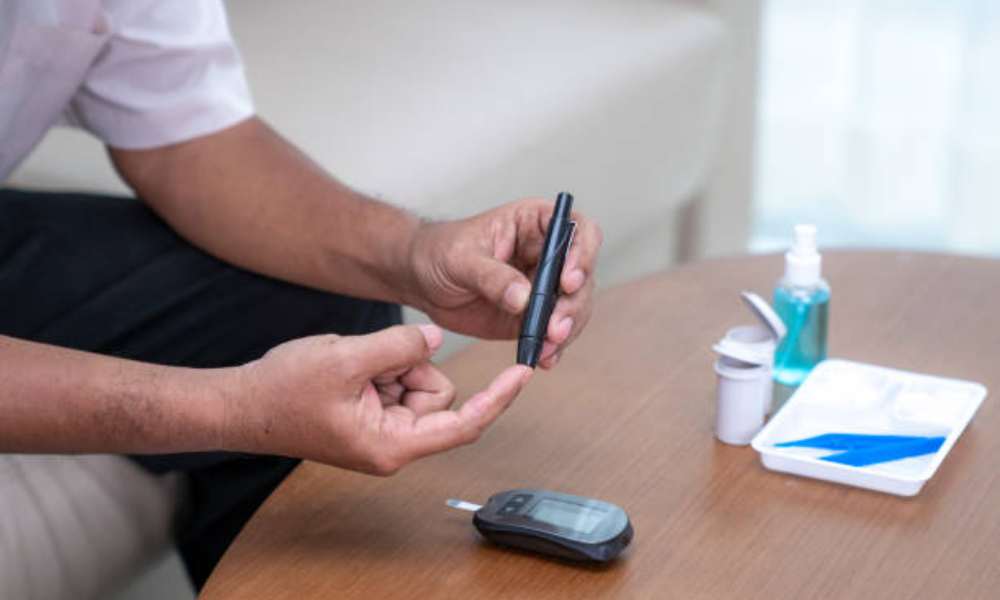Introduction
Caring for a person with Diabetes Patient goes a long way beyond simply managing their bodily signs and symptoms; it’s approximately growing a space wherein their health, emotional well-being, and daily behavior are fully supported. Diabetes, a situation that throws off how the body methods sugar, needs steady vigilance. But with the right care, lifestyles can turn out to be smoother, healthier, and greater balanced for the one you love. Let’s take a deep dive into what it clearly takes to offer this stage of care at domestic, starting with why such care isn’t simply essential, however clearly essential.
Why Home Care is Crucial for a Diabetes Patient
Home care isn’t just handy—it could be the lifeline that determines how well a diabetes patient manages their situation. Diabetes brings a completely unique set of challenges: blood sugar tracking, medicinal drug schedules, life-style modifications—each with its very own intricacies. A stable, supportive domestic surroundings is prime, no longer just to maintain signs at bay however to save you complications which include heart disease or nerve damage. Thoughtful, steady care doesn’t simply help stabilize fitness; it is able to notably improve exceptional of lifestyles.
The Role of Family and Friends in Diabetes Care

Family and buddies aren’t simply spectators in diabetes care—they’re a part of the core assist machine. Diabetes can be an setting apart situation, but whilst cherished ones step in with reminders, encouragement, and emotional aid, the burden feels lighter. It’s about extra than simply prompting them to take their meds or pick out the salad over the fries; it’s celebrating every small victory, status sturdy through the hard days, and really being companions in health. With their assist, diabetes management turns into a shared journey, no longer a solo war.
7 Key Tips for Effective Diabetes Care at Home
Now that we understand the importance of a supportive environment, it’s time to lay out the seven foundational tips that make home care effective. From keeping tabs on blood sugar levels to whipping up diabetes-friendly meals, these tips cover the essentials. With these strategies in place, the daily life of someone with diabetes can become far more manageable.
1. Understanding Diabetes: The Basics Every Caregiver Should Know
To properly care for someone with diabetes, you need to grasp the basics. Diabetes, at its core, is a chronic condition where the body struggles with insulin production or usage, which results in blood sugar imbalances. There are two primary types: Type 1, where the pancreas doesn’t produce insulin, and Type 2, where the body becomes resistant to insulin. Though different in nature, both types require careful management to avoid severe complications.
Types of Diabetes and Their Daily Impact
Type 1 diabetes usually strikes early, often in childhood, and requires insulin therapy for life. Type 2 diabetes is more common in adults and, with effort, may be managed through diet and lifestyle changes. But no matter the type, each demands vigilant care—without it, the consequences can be devastating.
Common Warning Signs to Watch For
Keeping an eye on symptoms is essential. Things like frequent thirst, fatigue, or blurred vision may indicate dangerous fluctuations in blood sugar. Caregivers must remain alert, ready to act at the first sign of trouble.
2. Blood Sugar Control: The Backbone of Diabetes Care
Managing blood sugar levels is the core of diabetes care. Monitoring these levels regularly helps prevent complications and keeps health stable. When caregivers understand how to regulate blood glucose, they hold the key to safeguarding their loved one’s well-being.
Creating a Diabetes-Friendly Home
3. Stocking Up on Essentials
Equip the home with all the necessary diabetes supplies—glucose meters, test strips, and other tools. It’s also helpful to have snacks and medications on hand for emergencies. Make sure everything is within reach so that managing diabetes becomes as seamless as possible.
Meal Planning for Diabetes
Keeping the pantry filled with diabetes-friendly options—think fresh veggies, whole grains, and lean proteins—sets the stage for healthy eating. Pre-planning meals can make sticking to a nutritious diet easier, ensuring balanced blood sugar levels throughout the day.
4. Monitoring Blood Sugar Levels Regularly

Daily blood sugar checks aren’t just important—they’re non-negotiable. A caregiver needs to know how to use a glucose meter and track readings to understand patterns and adjust care accordingly.
How to Respond to Off-Target Readings
Every patient’s target range varies, so if readings are off, swift action is crucial. Whether it’s administering insulin or offering a quick snack, knowing how to react can prevent more severe issues from arising.
5. Preparing Balanced, Diabetes-Friendly Meals
Food is medicine when it comes to diabetes patient . Carbohydrates, fiber, and protein all play roles in controlling blood sugar, so balanced meals are key. Including fiber-rich vegetables, whole grains, and lean proteins helps regulate sugar levels more effectively.
Simple, Delicious Recipes for Everyday
Meals like a grilled chicken salad or a veggie-packed quinoa bowl don’t just nourish—they stabilize blood sugar and taste great. Healthy eating doesn’t have to be a chore; with the right planning, it can be enjoyable.
6. Encouraging Regular Physical Activity
Exercise plays a pivotal role in keeping blood sugar in check. Low-impact activities such as walking or gentle stretching can make a significant difference. Physical activity also boosts overall health, mood, and energy.
Integrating Exercise into Daily Life
Even small movements matter. Activities like yoga or a short walk after meals can work wonders. The key is finding exercises that your loved one enjoys and can sustain.
7. Managing Medications and Administering Insulin

Diabetes Patient medications are critical for controlling blood sugar. Sticking to a medication schedule is vital, as missed doses can throw glucose levels off track.
Proper Insulin Administration
If insulin is required, proper storage and rotating injection sites are crucial to avoid complications. Organize medications so nothing is forgotten, and set up reminders for a consistent routine.
Handling Diabetes Emergencies
Emergencies can arise, and it’s vital to be prepared. Low blood sugar (hypoglycemia) can lead to fainting, while high blood sugar (hyperglycemia) can cause dehydration or worse. Knowing how to react in these situations can save lives.
Supporting Mental and Emotional Health
Living with diabetes can be mentally exhausting. Patients often experience anxiety or frustration, and their caregivers may feel overwhelmed too. Open communication, mindfulness, and seeking professional help when necessary can alleviate some of this emotional burden.
Final Thoughts: Building a Sustainable Care Routine
Caring for someone with diabetes means building habits that become second nature—routines for eating, exercising, monitoring, and resting. Celebrate small wins, track progress, and stay informed about the latest in diabetes care. With patience, knowledge, and compassion, you can help your loved one live a fulfilling, healthy life that’s not overshadowed by diabetes but defined by resilience and care.










More Stories
4 Powerful Remedies For Sobriety Success
A Reminder To Include Some Zinc In Your Diet
How to Make The Transition to Eating Healthier and Real Food